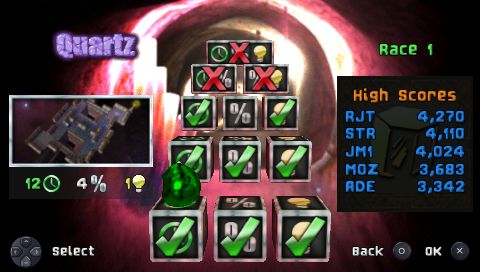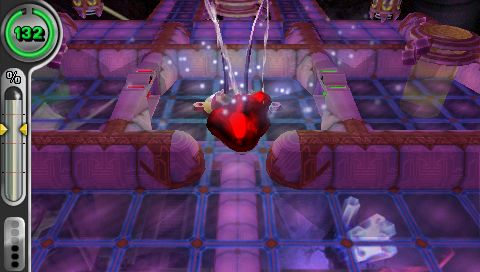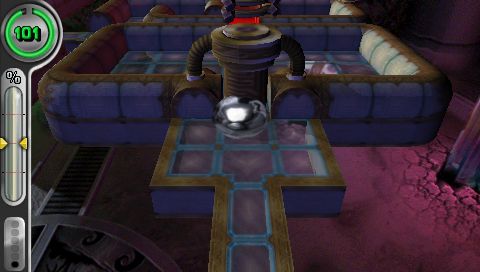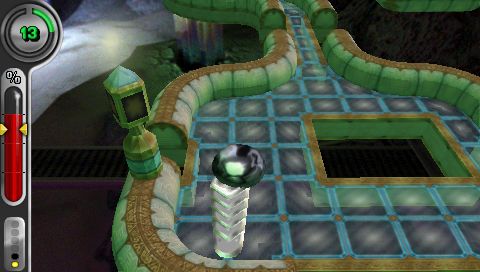Retro Replay Review
Gameplay
Archer Maclean’s Mercury offers a brilliantly tactile puzzle experience by placing you in control of a shimmering blob of mercury. Instead of steering a character directly, you tilt each level’s environment, guiding the liquid metal through intricate mazes and deadly obstacles. This elegant twist on traditional puzzle mechanics feels intuitive almost instantly, yet the challenge ramps up quickly, keeping you engaged from the very first drop of mercury.
(HEY YOU!! We hope you enjoy! We try not to run ads. So basically, this is a very expensive hobby running this site. Please consider joining us for updates, forums, and more. Network w/ us to make some cash or friends while retro gaming, and you can win some free retro games for posting. Okay, carry on 👍)
Throughout 83 uniquely designed mazes, you’ll encounter color markers that transform your blob into the hue needed to unlock the exit portal. Simple at first, these color-switch puzzles evolve into elaborate tests of strategy when you must split your mercury into multiple droplets. Rolling each droplet over different switches, you recombine them into entirely new colors to progress, demanding careful planning and steady hands.
The game world is littered with dynamic elements such as conveyor belts, launching pads, moving platforms, and hazardous edges. These features not only add excitement but also create moments of both triumph and frustration. A well-timed tilt can send your mercury soaring perfectly onto a platform, while a slight misjudgment might split your blob unexpectedly, forcing you to restart or backtrack.
Difficulty scales smoothly across the levels, introducing new hazards and puzzle types in a way that feels fair. Early stages teach you the basics—tilting the environment, hitting color pads, and avoiding pitfalls—before layering in more complex mechanics like timed gates, rotating platforms, and precision-only splits. This gradual curve maintains motivation without overwhelming newcomers to the puzzle genre.
Control responsiveness is a standout feature. Whether using analog sticks or motion controls, the world tilts fluidly, reflecting the weight and momentum of your mercury. This physicality deepens immersion, making each successful run through a maze immensely satisfying. Occasional sensitivity tweaks might be needed to suit personal preferences, but overall the control scheme is robust and finely tuned.
Graphics
Visually, Mercury shines with clean, colorful aesthetics that emphasize clarity of play over flashy effects. Each maze is rendered in crisp detail, with bright platforms, glowing color pads, and transparent liquids that catch the light realistically. This level of polish helps you instantly identify hazards, goals, and puzzle elements, ensuring you can focus on problem-solving rather than deciphering the environment.
The fluid simulation of the mercury blob is particularly impressive. Watching the metal droplet elongate, split, and merge feels satisfyingly organic, thanks to responsive physics that mirror real-world behavior. This attention to detail makes nearly every movement a delight to behold, transforming each level into a miniature kinetic sculpture you guide to completion.
While the game isn’t pushing the boundaries of graphical horsepower, its art direction is consistent and purposeful. Backgrounds remain unobtrusive yet stylish, supporting the foreground action without clutter. Subtle shadowing and reflective surfaces add depth, making each obstacle and platform feel grounded in a coherent, futuristic setting.
On handheld platforms, the game maintains high frame rates and visual fidelity, ensuring that the fluid motion of the mercury never stutters or loses smoothness. Whether docked or undocked, the experience remains stable, which is crucial when precision matters most. Load times are minimal, meaning you can dive right back into a challenging level without long waits.
Special effects such as color transitions, splashes of mercury when you split the droplet, and satisfying sparks when fusing blobs further enhance the sensory experience. These touches don’t distract but instead reward you visually for carefully executed moves and successful puzzle completions.
Story
Archer Maclean’s Mercury doesn’t rely on a deep narrative to drive its puzzles; instead, the game’s premise is simple and functional. You take on the role of an operator tasked with guiding a sentient blob of mercury through a series of test chambers. While there’s no overarching plot or character development, the context of scientific experimentation and puzzle trials provides just enough thematic glue to keep things coherent.
The lack of a traditional storyline allows the gameplay to shine, placing the focus squarely on puzzle design rather than dialogue or cutscenes. Each chamber feels like a logical extension of the previous one, with level names and ambient electronic music hinting at a high-tech laboratory environment. This minimal world-building is effective, creating a sense of progression without unnecessary exposition.
Scoreboards, time challenges, and optional collectibles serve as narrative stand-ins, motivating you to master each level for bragging rights and personal satisfaction. While you won’t uncover plot twists or memorable characters, the satisfaction of solving a particularly fiendish maze becomes your own story—one of trial, error, and eventual triumph.
Overall Experience
Archer Maclean’s Mercury stands out in a crowded puzzle genre thanks to its unique tilt-based controls and fluid physics. The gameplay loop is highly addictive: you aim, tilt, split, and recombine until you achieve the perfect color match. This simplicity belies a deep and varied puzzle design that stays fresh across 83 levels of steadily increasing challenge.
Replay value is high for completionists and speedrunners alike. Each level offers multiple goals—simply finishing, beating target times, and collecting hidden items. This tiered challenge structure encourages revisiting earlier stages with newfound skills, extending the game’s lifespan well beyond initial completion.
Some players may find the absence of a robust story or characters to be a drawback, but for fans of pure puzzle action, this is a blessing. Mercury keeps the focus on brain-teasing obstacles and precise movement, delivering frustration-free loading, responsive controls, and visually appealing environments.
Whether you’re a puzzle veteran seeking fresh mechanics or a newcomer looking for a gentle yet engaging introduction, Archer Maclean’s Mercury has something to offer. Its clever level design, satisfying physics, and consistent difficulty curve make it a standout choice for anyone craving a modern, polished puzzle experience.
In summary, guiding shimmering mercury through perilous mazes via environmental tilts is an idea that sounds simple on paper but comes to life in spectacular fashion. This game is a testament to the power of well-executed mechanics over flashy storytelling, offering hours of gratifying challenge for puzzle enthusiasts of all skill levels.
 Retro Replay Retro Replay gaming reviews, news, emulation, geek stuff and more!
Retro Replay Retro Replay gaming reviews, news, emulation, geek stuff and more!









Reviews
There are no reviews yet.